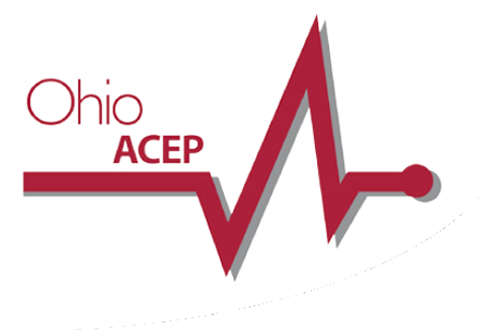Advocacy Updates
What We Are Watching at the Ohio Statehouse
Ohio ACEP is following a number of legislative issues related to the practice of emergency care in the state of Ohio.
General Assembly Wraps for 2025
On November 19th, the House held its final session of the year, which stretched into the early hours of November 20th. The House and Senate took action on dozens of bills related to property taxes, hemp and marijuana, and more. While the House concluded its session on November 19th, voting on the conference report for Senate Bill 56, regarding medical and adult-use marijuana and hemp products, the Senate returned on December 9th to accept the conference report. Neither the House nor the Senate will return to session until February of 2026.
Pharmacists’ Prescribing Legislation Introduced
Representatives Tim Barhorst and Jennifer Gross have introduced a bill to allow pharmacist to prescribe drugs among other things. House Bill 629 will allow pharmacist, under protocols developed by a physicians, APN or PAs, to treat patients who are 13 years or older for certain conditions such as the flu, UTIs, and skin conditions. They would be able to order and interpret labs and diagnostic tests, as well as prescribe medications for these conditions.
The provider who develops the protocol must be within a 45-mile radius of the pharmacy. The protocol would include what categories of patients and conditions the pharmacist is authorized to treat and include requirements regarding notifying the patients' primary care provider of treatments provided by the pharmacist.
The bill also provides that a pharmacist is reimbursed for these services.
Rural Hospital Funds
In November, Ohio submitted their proposal to CMS for the state’s share of the rural hospital supports included in the federal budget package. Recently a group of legislators sent a letter to the Governor requesting certain hospitals be prioritized to receive support. Cleveland.com reported on this request. The letter was sent by legislators who have formed a Rural Hospital Caucus. The story quotes Representative Meredith Craig: “It’s been our priority and our focus in the meetings we had to make sure we’re looking at hospitals that do not have any other creative revenue streams.”
Learn more about this program and review Ohio’s proposal here.
ACEP Opposes APRN Independent Practice Legislation
There are three different bills pending in the Ohio legislature that would give advanced practice nurses (APNs) a path to independent practice. Senate Bill 258, House Bill 449, and House Bill 508. Each bill eliminates the requirement for APNs to have a collaboration agreement after they complete a certain number of clinical hours (2,000 or 5,000 hours, depending on the bill). They also allow APNs to be a “collaborating provider” to other APNs if they have completed their clinical hours and are practicing independently.
HB 508 is garnering the most attention at the moment as it was referred to a committee chaired by one of the bill sponsors. At the proponent hearing, supporters included several APRNs, the Ohio Council of Behavioral Health & Family Services Providers, Americans for Prosperity, Trinity Health Systems, and others.
Ohio ACEP President Christina Campana testified in opposition to the bill on November 18th, along with other physician groups. Dr. Campana presented data to support the importance of physician-led healthcare, especially in the emergency department. Ohio ACEP has shared a call to action with the membership, and we encourage you to contact your State Representative in opposition to these bills.
Want to Learn More?
If you’re interested in viewing the status of all of the bills Ohio ACEP is tracking, you can find that here.


